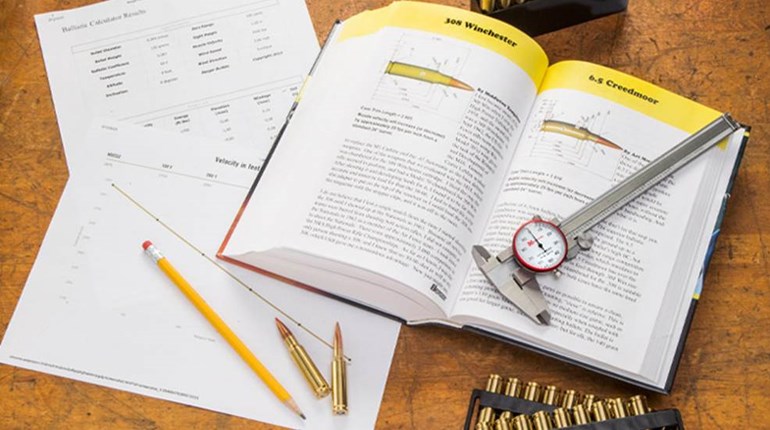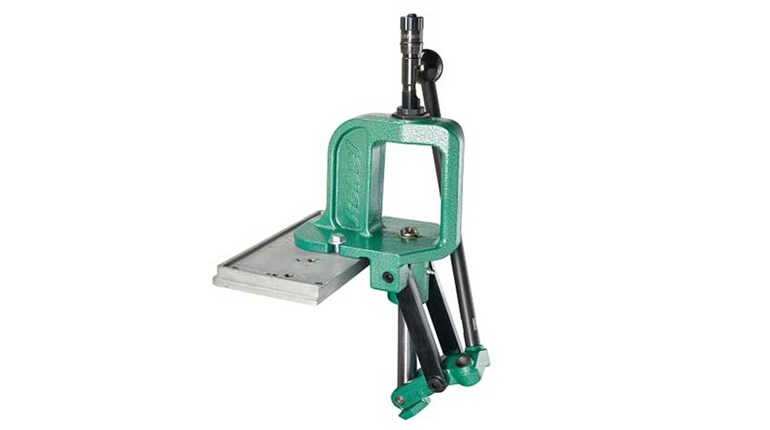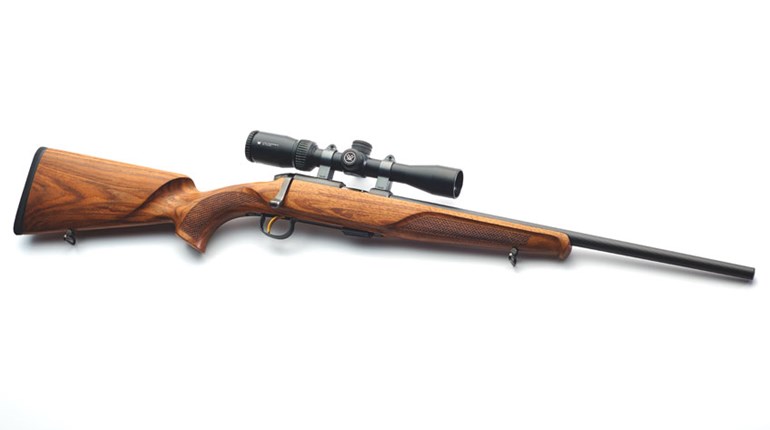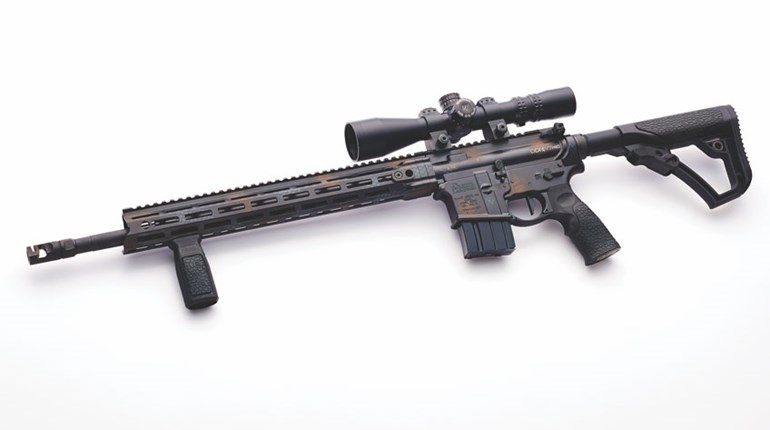
There’s no revelation, we expect, in an admission that we field a lot of questions about shooting. Even with the filter of “Carry Life” aiming—so to speak—at handguns, the number-one interrogative is as easy to predict as it is unanswerable: “What’s the best firearm?” Without more context, the equally predictable answer generally disappoints: “That depends …” Sigh.
Number two on the list is some variation on “I‘m not happy with my handgun results.” Replying to this is a lot more satisfying despite being nearly as tough to nail down. Mainly, this is because the answer is so easy to recollect and so pervasive in its benefits. Once understood and applied, a panoply of handgun problems often dissolve.
We call it “The Three ‘P’s”—Press, Press, Press—and tackle the first right here.
Press those palms together. When the hands join to grip a handgun, you should be able to apply substantial opposing pressure from both sides. This is crucial not only to controlling the firearm in recoil, but also in partially freeing the hands for other work. When the hands join to grip a handgun, you should be able to apply substantial opposing pressure from both sides.
Several unhelpful aspects of older doctrines may prevent this. “Tea-cupping,” where the weak hand is under the butt or magazine, is one example. It’s often recommended (particularly to younger, older or female shooters) as a way to get more support under the weight of the outstretched handgun, but makes bilateral pressure impossible. It also reinforces movement of the gun in recoil (by that upward “supporting” pressure) and particularly is no aid to speed. Often accompanied by a straight master or strong-side arm with the elbow locked, this dubious configuration transfers recoil energy all the way down to the waist through the locked elbow joint. The same is true of any “push-pull” technique also—the push is a lock with the same questionable benefit, and the pull creates more problems than it solves.
The Isosceles stance is a sound one in many respects, but a misunderstanding of it can lead to both arms being held out very straight as well, and—again—with the elbows unhelpfully locked. While physically bigger or stronger shooters can make this work, it’s a terrible idea for most, and for the same reason. At its worst, the hands recover the firearm further and further down with each successive shot, while momentum is transferred to and “stored” in the torso. Eventually, a give-away step back may even be required to stabilize the shooter.
Straight-armed techniques also have a tendency to induce movement of the head down to the hands to achieve sight alignment. This is less repeatable and slower than moving only the hands, and is a compound disaster for cross-dominant shooters (right-handed but left-eyed, or vice-versa). Shooting while moving is also noticeably complicated.
These disadvantages are all overcome by pressing the hands together more tightly around the pistol. But contrary to wide popular belief and very common teaching, this is not best achieved—indeed, cannot be achieved—by squeezing the pistol more tightly in the hands. Grip in this latter fashion depends mostly on the strength of the fingers (with related muscles mostly in the forearms), and is not up to the task when compared with the power available in the upper arms, and across the chest and upper back.
The problem is accessing that strength, and it can’t be accomplished effectively with any straight-armed technique. Simply, bend those elbows. This is the sine qua non for putting that extra power to work, the “without which, nothing” step on which the first “P” absolutely depends.
You need not take our word for it, either: A simple experiment will readily demonstrate how your own bilateral gripping strength increases with the “press” method. Stick both arms straight out, and press the palms together as firmly as you can manage. Now, draw your hands slowly toward you, and note how the force the opposed palms can apply increases with even small inward movements. With a somewhat jury-rigged device, we can even quantify the increase in our own case: Pulling in three inches correlated to a 19-percent increase in pressure, six inches to slightly over 32 percent, and nine inches to not quite 40 percent. We grant that not all this force is available as grip, but it gives an idea of what’s available with the improved geometry. These disadvantages are all overcome by pressing the hands together more tightly around the pistol.
This compression model of grip changes how we can respond to recoil energy. A conceptually subtle but very direct benefit is that opposition pressure contains shot energy mostly forward of the elbows and keeps a semi-automatic/self-loading pistol running. What’s often called “limp-wristing” we would argue has surprisingly little to do with the wrist—tense, limp or otherwise. It is instead a timing issue.
Semi-autos run mainly according to Newton’s Third Law. (Equal/opposite ring a bell?) When recoil reaction energy gets transmitted back into the hand/gun system only after traveling all the way to the waist and back through joints and tissues, it’s understandable that the energy needed to operate the mechanical locks and springs of the action is spread out over too long a period, and is therefore insufficient.
In other words, it’s our relative “squishiness” that is the problem. Our tissues and joints react to energy in several hundredths or a very few tenths of a second and effectively store and release energy relative to the timeframe of the firearm. Sometimes, the cycle is too slow for firearms to act and react as they are designed. Malfunctions, especially short-stroking and stove-piping, result from this timing mismatch. Improved rigidity close to the gun fixes this.
By getting away from a relatively slow skeletal model of recoil absorption to a muscular model of recoil dissipation, we create a dynamically tensioned system that can absorb and then feed back action-cycling energy considerably faster. A coincident benefit is less net movement of pistol and sights during the shot itself, and a reduction in follow-through effort to prepare for any subsequent shot.
Another major benefit appears when we try to shoot on the move. Locked elbows make any firearm perched at the end of those arms bounce almost uncontrollably as we stride, and gripping the pistol tighter in the old way is no help whatever. With even a little practice, bent elbows allow horizontal grip pressure to be maintained while vertical movement is damped. You will find an astonishing amount of the unhelpful “bounce” disappears. A related advantage is very apparent if you must shoot in the wind: By pulling your pistol in even a little, the “sail” area presented by the outstretched arms and firearm is reduced, and unwanted movement of the whole arm/hand/firearm system follows suit.
How much to bend the elbows to get to the optimum “press” tension remains a critical question. The answer has the disadvantage of being individual, because everyone is slightly different: Overall strength, proportions and length of the upper and lower arms, even hand size are all variables. A good place to start is to spread the elbows to shoulder width, and experiment.
Remember, too, to mind that head—resist the temptation to bring it down to the hands. Bring the sights up to the eyes and keep the head as still and erect as possible.
All of which gets us back where we started with the first “P.” By accessing the bilateral pressing power that is available when we oppose the palms, we free up the hands to work for which they are far better—and much more advantageously—suited. The second and third P’s build on this foundation.
For now, Press and Carry on.
Read Part II here


































